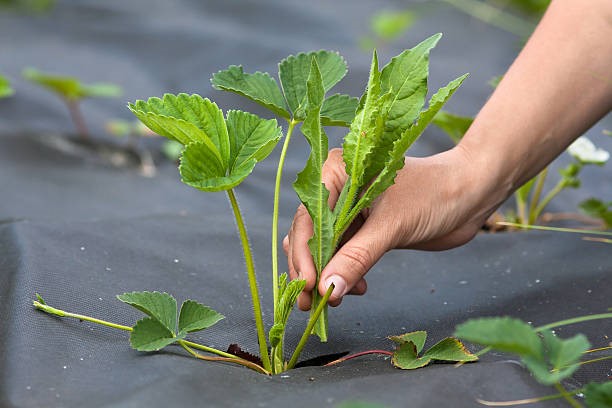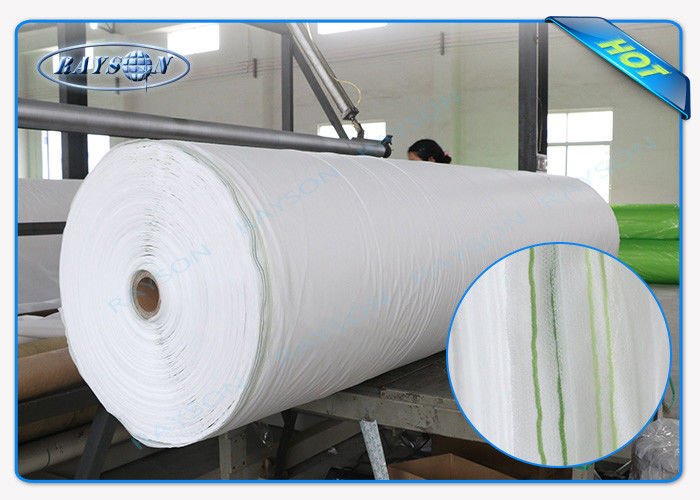
Non-Woven Industry Development. Nonwoven fabric is a product of the petrochemical industries after the creation of plastic cloth (film). It is lighter and more ventilated than plastic cloth. It is widely used in personal and medical hygiene products like facial towels, filters, and sanitary napkins. Later, the technology was further developed, and later utilized in engineering. Non-woven fabrics are utilized in vegetable production to avoid cold damage. The production process of non-woven fabric differs from plastic film, however the raw materials used are nearly the same. This comprises PE (polyvinylchloride), EVA(Ethylene Vinyl Acetate Copolymer), EVA/polyethylene, and PVA/polyvinylether. The traditional film made of plastic is created by melting the plastic and after that inflating it. It is continuous. It extends indefinitely. The film's surface is free from pores. It is a non-permeabil film which blocks all movement and exchange of molecules. Artificial chemical fibers, fabricated from the listed raw materials were the most sought-after product in the textile industry. However, these chemical fibers are still able to be transformed into cloth using traditional warp-weft weaving. Non-woven fabric is made by interweaving fibers at various angles in every direction. This is an alternative to traditional warp or weft weaving. It is more robust than traditional woven fabrics and can be produced from raw materials in one day. This is an alternative to weaving that calls for drawing in fibers. Recent years have seen an array of non-woven fabric being utilized in the apparel industry. Recently, due to the improvement of material science as well as the advancement of production technology non-woven materials have become more diverse and utilized more and more widely. We can see the different products and materials in every day of our lives. The growing use of non-woven textiles in agriculture is mainly due to their lightweight, simple production, cost-effective diversification, and wide range of applications. Follow this non woven weed fabric for more info.

Non-woven Fabrics are used in the Agricultural Industry. Non-woven fabrics first appeared in Europe in the year 1978. They were used to keep carrots warm in early harvesting and to stop the spread of tomato leaf virus and whiteflies. In the United States non-woven fabrics are employed to mulch sweet peppers, cantaloupes tomatoes, root vegetables, carrots, radishes, cabbage, lettuce, and other vegetables. It is used primarily for heat preservation, early harvesting, as well as insect control. Non-woven materials are good for covering surfaces , such as grassproof mats. They also can increase the temperature of soil by keeping water. A short fiber is utilized to create water-absorbing blankets that are placed on nursery beds in order to allow the roots to fully absorb water. They could also be used as the bottom substrate for turf production or used directly as garden grassland to help in drainage, moisturizing and even dividing the garden. They can also be used as planting bags to shield large woody plants like fruit trees or garden trees, and retain the moisture. In Taiwan, in addition to the mentioned functions Non-woven fabrics are also used in crop covering. They are also used for controlling the environmental impact of large greenhouses in order to conserve energy. Canopy curtains and double-layered covers help reduce radiation and heat loss at night. TAVIK fabrics are high-density, non-woven spunbonded TAVIK fabric that was used in the early days of shading and protecting cauliflower bulbs. They quickly adopted it by farmers because of its low thermal conductivity as well as capacity to shade. It was eventually employed to protect leaf vegetables from insects as well as shade the trees and the fruit trees. Due to Taiwan’s unique climate and ecology the growth of the industry in non-woven is slow. Non-woven fabric manufacturers from Taiwan continue to develop non-woven technologies. They are focused on water absorption and air permeability in non-woven fabrics. It is being utilized to store and preserve agricultural product. Follow this agriculture non woven fabric for more information.
